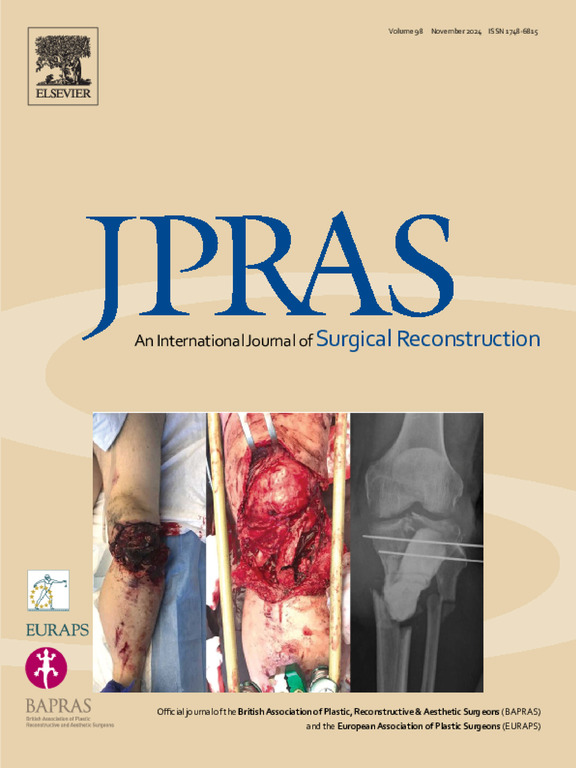Comparative study of cooling techniques for perforator detection in DIEP flap reconstruction using dynamic infrared thermography
IF 2.4
3区 医学
Q2 SURGERY
Journal of Plastic Reconstructive and Aesthetic Surgery
Pub Date : 2025-08-21
DOI:10.1016/j.bjps.2025.08.018
引用次数: 0
Abstract
Dynamic infrared thermography (DIRT) is a non-invasive technique for perforator mapping in Deep Inferior Epigastric artery Perforator (DIEP) flap breast reconstruction. Its accuracy is highly dependent on the cooling technique used to enhance thermal contrast. This study compares eleven cooling techniques based on cooling uniformity, artifact minimization, and usability. Techniques included both conductive and convective approaches and were evaluated using a Pugh Decision Matrix. The top three techniques, including the standard technique, were further assessed in a pilot clinical study. Water-based cooling with neoprene insulation and intensive pre-cooled pad cooling demonstrated the highest uniformity (mean standard deviations of 0.79 and 0.82 °C, respectively) and minimal artifact formation. Pilot clinical validation supported these findings. These techniques offer reliable and practical solutions for enhancing thermal contrast and image clarity in DIRT-based preoperative planning in DIEP flap surgery.
动态红外热像仪重建DIEP皮瓣中穿支检测冷却技术的比较研究
动态红外热成像技术(DIRT)是一种用于腹下深动脉穿支(DIEP)皮瓣乳房重建中穿支定位的无创技术。其准确性高度依赖于用于增强热对比的冷却技术。本研究比较了十一种基于冷却均匀性、伪影最小化和可用性的冷却技术。技术包括导电和对流两种方法,并使用Pugh决策矩阵进行评估。前三种技术,包括标准技术,在试点临床研究中进一步评估。氯丁橡胶绝缘水基冷却和密集预冷垫冷却表现出最高的均匀性(平均标准偏差分别为0.79和0.82°C)和最小的伪影形成。试点临床验证支持这些发现。这些技术提供了可靠和实用的解决方案,以提高热对比度和图像清晰度,在DIEP皮瓣手术中基于dirt的术前规划。
本文章由计算机程序翻译,如有差异,请以英文原文为准。
求助全文
约1分钟内获得全文
求助全文
来源期刊
CiteScore
3.10
自引率
11.10%
发文量
578
审稿时长
3.5 months
期刊介绍:
JPRAS An International Journal of Surgical Reconstruction is one of the world''s leading international journals, covering all the reconstructive and aesthetic aspects of plastic surgery.
The journal presents the latest surgical procedures with audit and outcome studies of new and established techniques in plastic surgery including: cleft lip and palate and other heads and neck surgery, hand surgery, lower limb trauma, burns, skin cancer, breast surgery and aesthetic surgery.

 求助内容:
求助内容: 应助结果提醒方式:
应助结果提醒方式:


